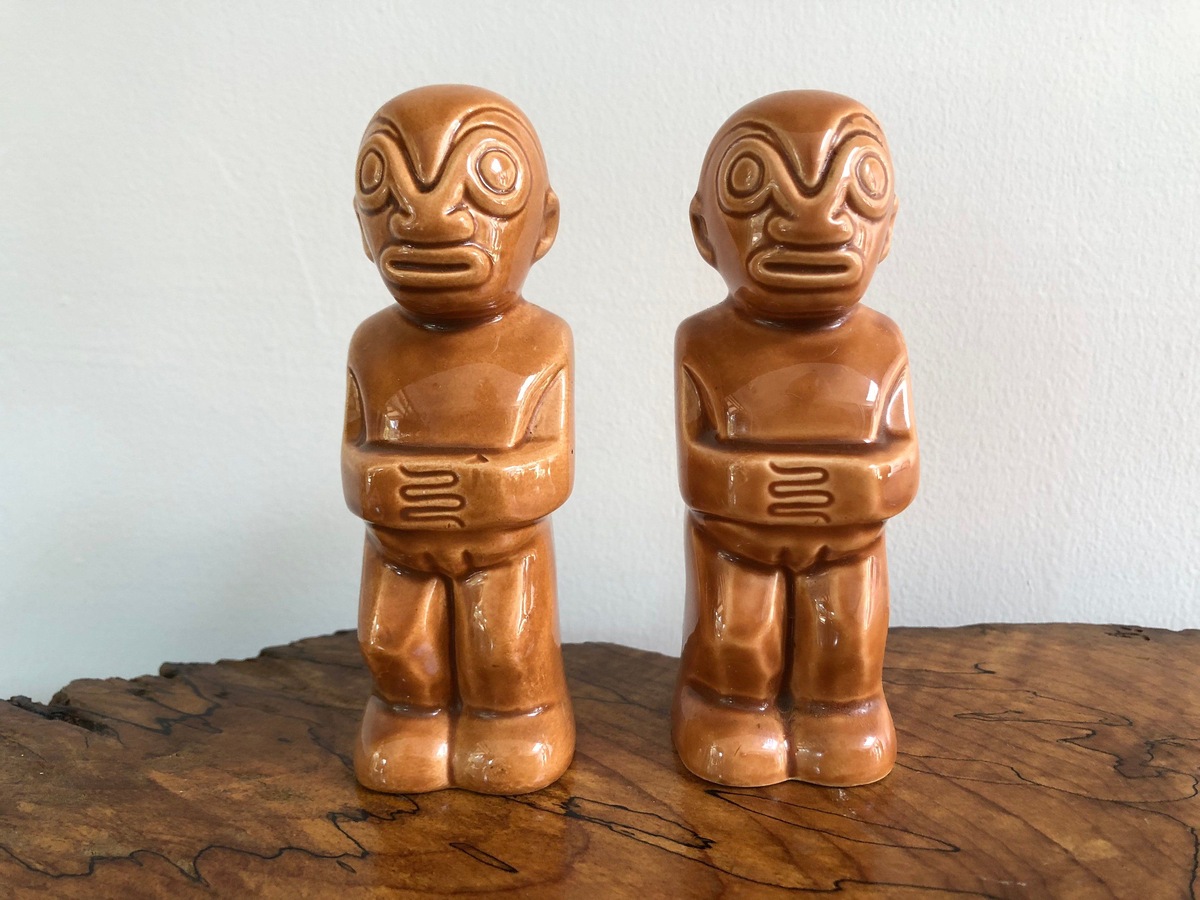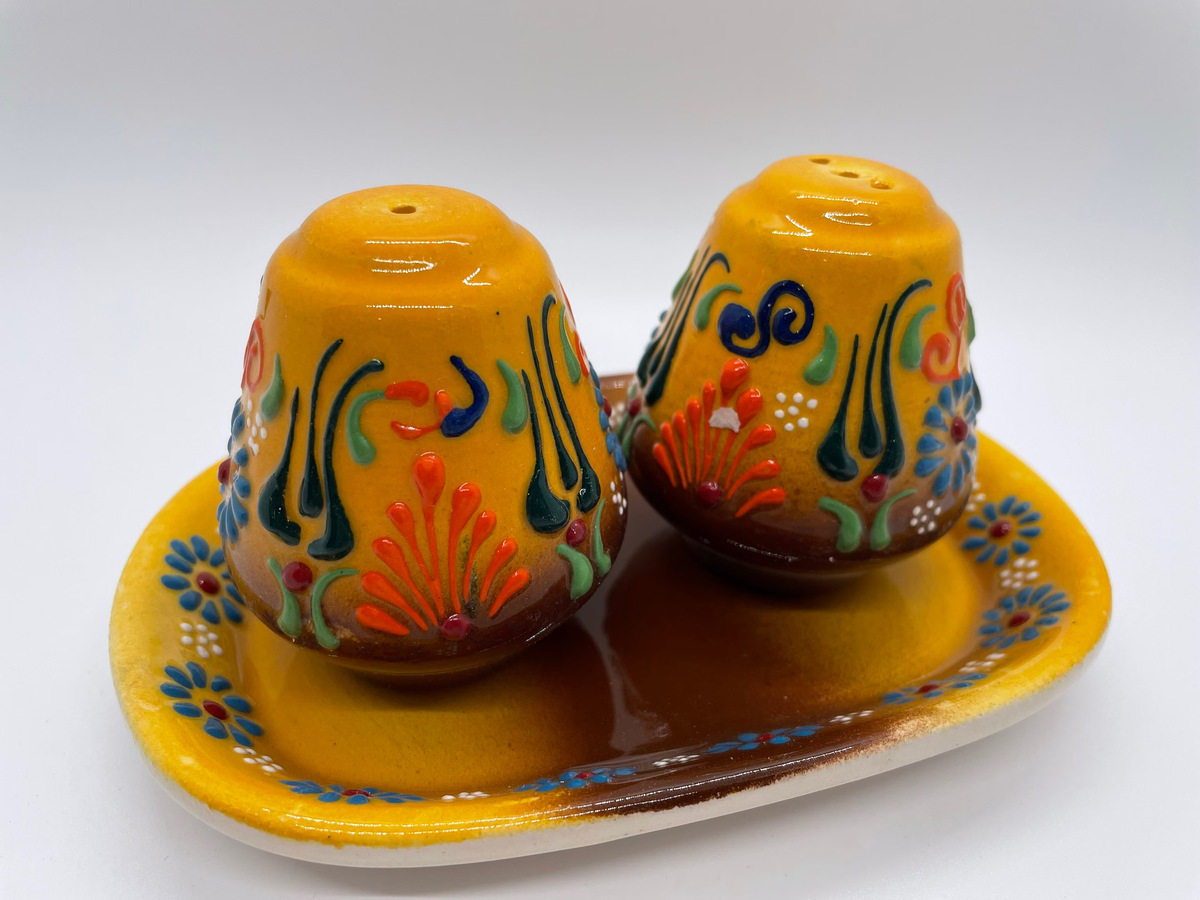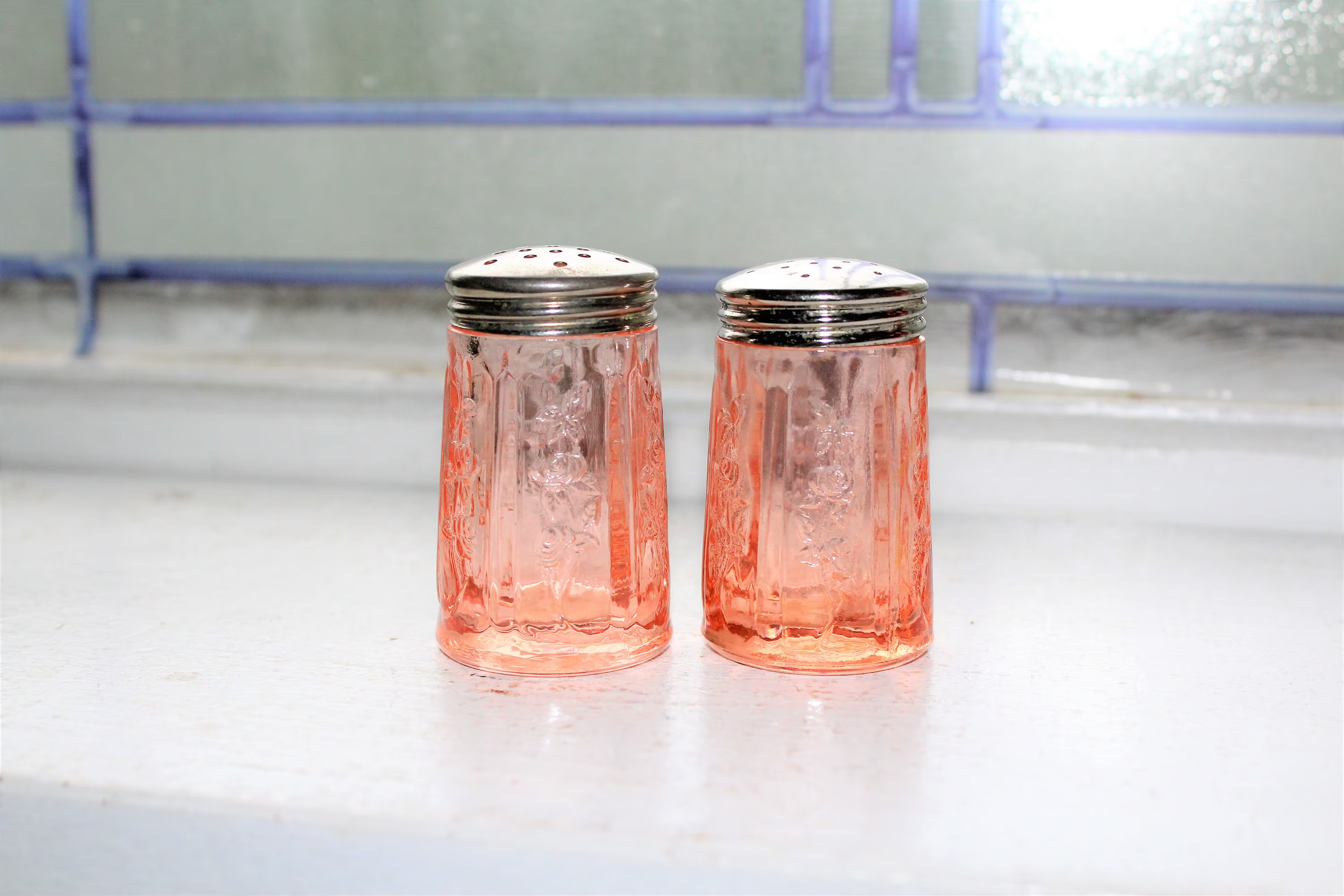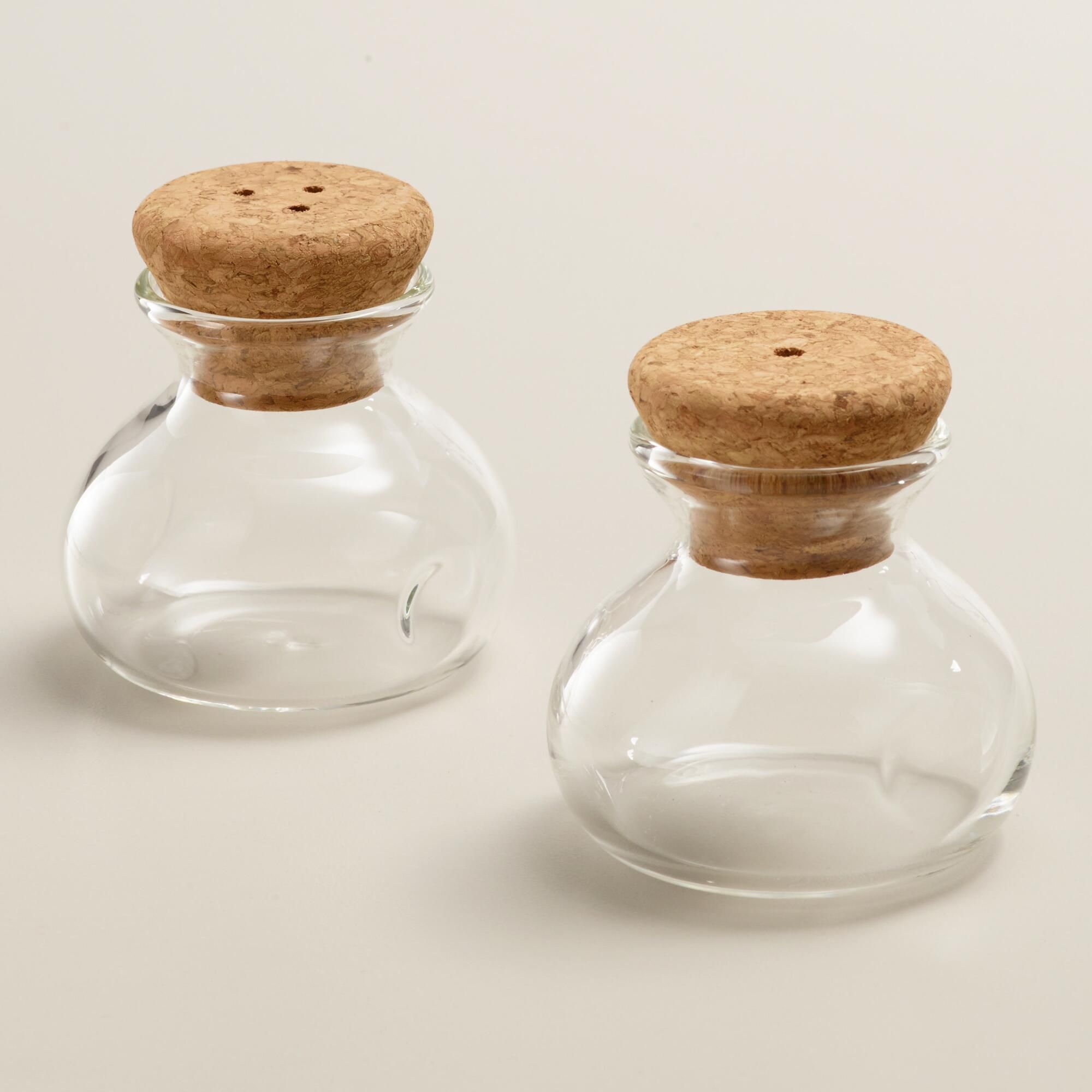Home>Dining>Tableware>In What Year Were Japanese Tiki Totem Salt And Pepper Shakers Made?


Tableware
In What Year Were Japanese Tiki Totem Salt And Pepper Shakers Made?
Modified: January 5, 2024
Discover the origins of Japanese tiki totem salt and pepper shakers. Uncover the manufacturing year of these unique and collectible tableware items.
(Many of the links in this article redirect to a specific reviewed product. Your purchase of these products through affiliate links helps to generate commission for Storables.com, at no extra cost. Learn more)
Introduction
Tableware enthusiasts and collectors often find themselves drawn to unique and intricately designed pieces that add charm and character to their dining experience. One such item that has gained popularity in recent years is the Japanese Tiki Totem Salt and Pepper Shakers. These delightful tabletop accessories not only serve a practical purpose but also showcase the rich cultural heritage of Japan.
With their vibrant colors, whimsical designs, and attention to detail, Tiki Totem Salt and Pepper Shakers have become a favorite collectible among tableware enthusiasts and decor aficionados. But what exactly is the history behind these charming items? When were they first produced, and what makes them unique to Japan? In this article, we will delve into the fascinating world of Tiki Totem Salt and Pepper Shakers and explore their cultural significance, design, manufacturing process, and how to identify their year of production.
So grab a cup of tea or your favorite beverage, and let’s embark on a journey to discover the captivating world of Japanese Tiki Totem Salt and Pepper Shakers.
Key Takeaways:
- Japanese Tiki Totem Salt and Pepper Shakers blend traditional Japanese craftsmanship with the allure of Tiki culture, offering a delightful combination of functionality, artistic design, and cultural significance for collectors and enthusiasts.
- Collecting and valuing Japanese Tiki Totem Salt and Pepper Shakers is an exciting journey that involves researching markings, assessing condition and rarity, focusing on specific themes, and networking with other enthusiasts to build a curated collection with cultural and historical significance.
History of Tiki Totem Salt and Pepper Shakers
The history of Tiki Totem Salt and Pepper Shakers can be traced back to the mid-20th century, when fascination with Polynesian culture and design was at its peak. The term “tiki” refers to the carved wooden or stone figures found in Polynesian and Maori cultures, which hold spiritual significance and are believed to represent deities or ancestors.
In the 1950s and 1960s, interest in Tiki culture spread rapidly across the United States, fueled by the popularity of Tiki bars and restaurants. These establishments embraced the tropical aesthetic, with bamboo decor, thatched roofs, and carved Tiki statues adorning their interiors.
Inspired by the craze, tableware manufacturers began producing Tiki-themed items, including salt and pepper shakers. These miniature replicas of Tiki statues became a fun and trendy way to add a touch of the exotic to dining tables.
Japanese artisans quickly recognized the appeal of Tiki Totem Salt and Pepper Shakers and started crafting their own unique versions. Combining traditional Japanese ceramic techniques with Polynesian-inspired designs, they created a fusion that resonated with collectors and enthusiasts.
These Tiki Totem Salt and Pepper Shakers soon became sought-after collectibles, not just for their functionality but also as decorative pieces that embodied the spirit of the Tiki culture. Over the years, their popularity has only grown, and today they are cherished by collectors worldwide for their nostalgic charm and cultural significance.
Nowadays, Tiki Totem Salt and Pepper Shakers can be found in various shapes, sizes, and materials. From intricately hand-painted ceramic shakers to modern designs made from BPA-free plastics, there is a wide range of options to suit every taste and preference.
As we continue our exploration of Tiki Totem Salt and Pepper Shakers, let’s delve into their cultural significance in Japan and understand how they are a unique reflection of the country’s rich traditional heritage.
Cultural Significance of Tiki Totems in Japan
In Japan, the concept of Tiki Totems holds a unique cultural significance that goes beyond their decorative appeal. While they may have originated in Polynesian and Maori cultures, Tiki figures have found their own place in Japanese folklore and artistry.
The Tiki Totems in Japan are often associated with the Shinto religion, which is deeply ingrained in the country’s culture. Shintoism focuses on the worship of nature, spirits, and ancestors, and Tiki figures are believed to embody these spiritual entities.
These totems are considered guardians of the natural world and are believed to bring good luck, protection, and prosperity to those who display them. They are also seen as a connection to the spiritual realm, serving as a channel to communicate with ancestral spirits and seek their guidance and blessings.
Japanese Tiki Totems are crafted with great care and attention to detail, often featuring intricate carvings and symbols that hold particular meaning. Each design element, whether it be the facial expressions, body posture, or decorative motifs, is intended to convey a specific message or invoke a particular spiritual energy.
Furthermore, Tiki Totems are frequently used in traditional ceremonies and festivals in Japan. They play a significant role in events like the Tanabata festival, where people write their wishes on small pieces of paper and tie them to bamboo poles adorned with Tiki figures.
By incorporating Tiki Totems into the design of salt and pepper shakers, Japanese artisans have managed to merge the traditional cultural significance of these figures with a practical and functional household item. This fusion creates a unique piece of tableware that not only adds flavor to meals but also facilitates a deeper connection to Japan’s spiritual and ancestral roots.
Now that we understand the cultural significance behind Tiki Totems in Japan, let’s explore the design aspects and materials used in crafting Japanese Tiki Totem Salt and Pepper Shakers.
Design and Materials Used in Japanese Tiki Totem Salt and Pepper Shakers
Japanese Tiki Totem Salt and Pepper Shakers are renowned for their intricate design and attention to detail. Artisans carefully craft these miniature replicas, ensuring that they capture the essence of the original Tiki figures while incorporating their own unique flair.
The designs of Tiki Totem Salt and Pepper Shakers can vary widely, ranging from traditional motifs to modern interpretations. Traditional designs often feature Tiki figures with exaggerated facial features, such as large eyes, wide noses, and broad grins. These characteristics are intended to convey a sense of joy and positive energy.
In addition to the facial expressions, the body posture of the Tiki Totem is also important. Some may have their arms raised, symbolizing protection and strength, while others may have hands placed on their stomachs to represent abundance and prosperity.
The materials used in crafting Japanese Tiki Totem Salt and Pepper Shakers also contribute to their unique appeal. Traditional materials such as ceramic or porcelain are commonly used, as they offer a smooth and durable surface for the intricate designs. These materials allow for hand-painting, enabling artisans to add vibrant colors and intricate patterns to the shakers.
However, modern interpretations of Tiki Totem Salt and Pepper Shakers may incorporate different materials such as BPA-free plastics or even eco-friendly materials like bamboo or wood. These materials provide a more contemporary twist while still maintaining the essence of Japanese craftsmanship.
One key aspect of the design is the functionality of the salt and pepper shakers. Artisans ensure that the shakers are easy to handle and use, with proper lids and appropriate-sized holes for dispensing the seasonings. This attention to detail allows users to effortlessly season their meals while enjoying the visual charm of the Tiki Totem design.
Whether it’s the traditional ceramic craftsmanship or innovative use of eco-friendly materials, Japanese Tiki Totem Salt and Pepper Shakers exemplify the skill and creativity of Japanese artisans. The fusion of design elements and materials creates a visually appealing and practical tableware item that adds a touch of artistry to any dining experience.
Now that we have explored the design and materials used in crafting Japanese Tiki Totem Salt and Pepper Shakers, let’s delve into the manufacturing process and how these charming tableware items come to life.
Look for markings or labels on the salt and pepper shakers to determine the year of production. Many vintage items have a manufacturer’s mark or date stamp on the bottom.
Manufacturing Process of Tiki Totem Salt and Pepper Shakers in Japan
The manufacturing process of Tiki Totem Salt and Pepper Shakers in Japan involves a combination of traditional craftsmanship and modern techniques. Skilled artisans meticulously follow a series of steps to create these charming and functional tableware pieces.
The process typically begins with the selection of the appropriate materials. Depending on the desired design and functionality, artisans choose between ceramic, porcelain, eco-friendly materials like bamboo or wood, or modern alternatives like BPA-free plastic.
Once the materials are chosen, the artisans proceed to the shaping and molding stage. For ceramic or porcelain shakers, clay is carefully molded into the desired shape, taking into consideration the intricacies of the Tiki Totem design. The clay is then fired at high temperatures to ensure durability and strength.
If the shakers are made from plastic or eco-friendly materials, they are molded using advanced injection molding techniques. This process allows for precise and consistent production of the shakers’ components.
After the shaping and molding, the next step is the decoration phase. Artisans apply their creativity and skill to hand-paint or digitally print intricate designs onto the shakers. Vibrant colors, traditional patterns, and details are carefully added to bring the Tiki Totem design to life.
Depending on the complexity of the design, multiple layers of paint or glaze may be applied, with each layer undergoing a firing or drying process to ensure durability and longevity.
Once the decoration is complete, the artisans focus on the functionality of the Tiki Totem Salt and Pepper Shakers. This involves adding appropriate lids and designing the dispensing mechanisms. Careful attention is given to the sizes of the holes in the shakers to ensure the desired amount of salt or pepper is dispensed with ease.
Finally, the shakers undergo a quality control check to ensure that they meet the high standards of craftsmanship and functionality. Any necessary adjustments or refinements are made at this stage before the shakers are packaged and prepared for distribution.
The manufacturing process of Tiki Totem Salt and Pepper Shakers combines traditional techniques with modern manufacturing methods, creating unique and high-quality tableware items that embody the skill and innovation of Japanese craftsmanship.
Now that we understand the manufacturing process, let’s explore how to identify the year of production for Japanese Tiki Totem Salt and Pepper Shakers.
Identifying the Year of Production for Japanese Tiki Totem Salt and Pepper Shakers
As a tableware enthusiast or collector, it can be exciting to determine the year of production for Japanese Tiki Totem Salt and Pepper Shakers. Identifying the specific year can provide valuable insight into their rarity and historical significance.
One of the key factors in determining the year of production is the marking or stamp found on the shakers. Many Japanese manufacturers imprint their products with a unique mark or symbol that can be traced back to a specific time period.
These marks can be located on the bottom or back of the shakers and are often accompanied by the name of the manufacturer or the location of production. By researching and cross-referencing these marks with manufacturer catalogs or online databases, you can gain a better understanding of the timeframe in which the shakers were produced.
Additionally, the style and design of the Tiki Totem Salt and Pepper Shakers can give clues about their production era. Different design trends and techniques were popular during particular time periods, providing further insight into the year of production.
If you are unable to find specific markings or information about the manufacturer, you can examine the construction and materials used in the shakers. Older pieces may show signs of wear or have a more vintage appearance, while more recent productions may have a more contemporary aesthetic.
Furthermore, consulting with experienced collectors, joining online forums, or attending tableware exhibitions can provide valuable insights and expertise in determining the year of production for Tiki Totem Salt and Pepper Shakers.
It is important to note that not all Tiki Totem Salt and Pepper Shakers will have easily identifiable markers or clear indications of their production year. In such cases, it may be challenging to determine the exact year, but the overall design, craftsmanship, and availability of the piece can still provide valuable information.
By combining your research, knowledge, and insights from the tableware community, you can make informed estimations and gain a deeper appreciation for the history and value of Japanese Tiki Totem Salt and Pepper Shakers.
Now that we have explored how to identify the year of production, let’s delve into the world of collecting and valuing Japanese Tiki Totem Salt and Pepper Shakers.
Collecting and Valuing Japanese Tiki Totem Salt and Pepper Shakers
Collecting Japanese Tiki Totem Salt and Pepper Shakers can be a thrilling and rewarding hobby. These unique tableware pieces not only add charm to any collection but also hold cultural and historical significance. If you are interested in starting or expanding your collection, here are some tips on collecting and valuing Japanese Tiki Totem Salt and Pepper Shakers.
1. Research and Learn: Begin by immersing yourself in the world of Tiki culture and understanding the different styles, designs, and materials used in Japanese Tiki Totem Salt and Pepper Shakers. Educate yourself about the significant manufacturers, historical periods, and notable collections to get a better understanding of their value.
2. Condition and Rarity: When evaluating the value of Tiki Totem Salt and Pepper Shakers, the condition of the piece plays a crucial role. Look for shakers that are in excellent condition with minimal signs of wear or damage. Additionally, rarity adds value to a piece, so consider the scarcity and availability of certain designs or time periods.
3. Markings and Authentication: Look for clear markings or stamps on the shakers that can be traced back to specific manufacturers or time periods. Authenticate the piece by comparing it with known signatures of reputable artisans. This will help determine the authenticity and provenance of the shakers.
4. Rarity and Desirability: Some Tiki Totem Salt and Pepper Shakers may have unique features, limited production runs, or be part of a special edition. These factors can significantly impact their value and desirability among collectors. Consider these aspects when adding to your collection.
5. Collecting Themes: You may choose to focus your collection on a specific theme, such as a particular manufacturer, design style, or historical period. This can give your collection a cohesive and curated feel while allowing you to become an expert in that specific area.
6. Networking and Expertise: Connect with other collectors, attend trade shows, and join online forums and communities dedicated to Tiki Totem Salt and Pepper Shaker collecting. Engaging with experienced collectors and experts can provide valuable insights, advice, and access to rare and sought-after pieces.
7. Valuation Resources: Consult reputable price guides, auction records, and online marketplaces to get a sense of the current market value for specific Tiki Totem Salt and Pepper Shakers. Stay updated on trends and fluctuations in the market to make informed decisions about buying, selling, or trading your collection.
Remember, collecting Japanese Tiki Totem Salt and Pepper Shakers is not just about the monetary value but also about the joy and personal connection they bring. Each piece holds a story and is a testament to the skilled craftsmanship of Japanese artisans.
As you embark on your collecting journey, embrace the beauty and cultural significance of these tabletop treasures and enjoy the fascinating world of Japanese Tiki Totem Salt and Pepper Shakers.
With our exploration of collecting and valuing these unique items complete, let’s conclude our article on Japanese Tiki Totem Salt and Pepper Shakers.
Conclusion
Japanese Tiki Totem Salt and Pepper Shakers offer a delightful combination of functionality, artistic design, and cultural significance. These charming tableware pieces showcase the fusion of traditional Japanese craftsmanship with the allure of Tiki culture.
From their initial rise in popularity during the mid-20th century to the present day, these shakers have captured the hearts of tableware enthusiasts and collectors around the world. Their vibrant colors, whimsical designs, and attention to detail reflect the unique artistic flair of Japanese artisans.
Understanding the history, cultural significance, design, and manufacturing process of Japanese Tiki Totem Salt and Pepper Shakers adds a deeper appreciation for their value and appeal. Whether crafted from ceramic, porcelain, eco-friendly materials, or modern plastics, these shakers bring a touch of artistry to any dining experience.
For collectors, the journey of collecting and valuing Tiki Totem Salt and Pepper Shakers is an exciting one. Researching the markings, assessing the condition and rarity, focusing on specific themes, and networking with other enthusiasts all contribute to the joy and satisfaction of building a curated collection.
Ultimately, the value of these shakers extends beyond their monetary worth. They represent a cultural connection and reflect the skill, creativity, and artistry of Japanese craftsmen. The joy that these unique tableware items bring to collectors and their ability to evoke a sense of nostalgia and cultural appreciation is truly priceless.
So, whether you are a seasoned collector or someone who appreciates the beauty of these shakers, let the world of Japanese Tiki Totem Salt and Pepper Shakers continue to captivate and inspire you. Embrace their charm, discover their stories, and cherish these miniature works of art that bring a touch of whimsy to your dining table.
Now, go forth and embark on your own journey into the captivating world of Japanese Tiki Totem Salt and Pepper Shakers. May you find joy, inspiration, and a deeper appreciation for the artistry and cultural heritage they represent.
Frequently Asked Questions about In What Year Were Japanese Tiki Totem Salt And Pepper Shakers Made?
Was this page helpful?
At Storables.com, we guarantee accurate and reliable information. Our content, validated by Expert Board Contributors, is crafted following stringent Editorial Policies. We're committed to providing you with well-researched, expert-backed insights for all your informational needs.















0 thoughts on “In What Year Were Japanese Tiki Totem Salt And Pepper Shakers Made?”